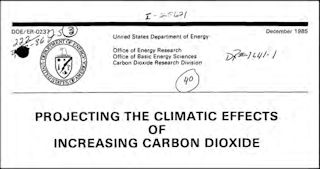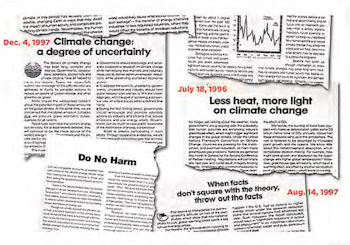SEJournal Online is the digital news magazine of the Society of Environmental Journalists. Learn more about SEJournal Online, including submission, subscription and advertising information.
Inside Story
InsideClimate News, a Pulitzer Prize-winning nonprofit dedicated to covering climate change, energy and the environment, is known for going deep into stories. For its 2015 investigation,“Exxon: The Road Not Taken,” reporters Neela Banerjee, John H. Cushman, Jr., David Hasemyer and Lisa Song spent eight months painstakingly documenting Exxon’s work in the early days of emerging climate science and tracking down its scientists, some after almost four decades. The 2015 series has already won several prizes, including first place in environmental reporting from the Scripps Howard Foundation and finalist for the Pulitzer Prize forPublic Service Journalism and the Goldsmith Prize for Investigative Reporting. SEJournal’s Beth Daley recently caught up with Banerjee to talk about the project.
 |
|
Exxon researchers contributed key climate modeling to a 1985 Energy Department study that projected significant global warming, and said some climate change was already locked in. Graphic courtesy of DoE. |
SEJournal: How did the idea originate to explore what Exxon knew about global warming?
Neela Banerjee: At our January 2015 staff retreat, founder and publisher David Sassoon proposed that we look into what the fossil fuel industry knew about climate change, when they knew it and what they did with that knowledge. He was inspired by accounts he’d been reading about BP’s scientists in the 1990s coming to accept climate science and convincing their CEO to do as well.
He’d been to a journalism conference in fall 2014 where he was urged to look for climate science whistleblowers within the fossil fuel industry. David was jazzed about the idea. The rest of us were far more skeptical that it would be anything more than a wild goose chase. That said, we were intrigued and thought we should at least poke around a bit.
Initially, reporters looked at Shell, BP, Exxon, the coal industry and the American Petroleum Institute. We thought that fossil fuel industry scientists would probably be active in the 1990s, as BP’s were. We focused more on Exxon when former federal scientist Mike MacCracken told InsideClimate reporter Dave Hasemyer that Exxon was doing solid peer-reviewed research with top academics as early as 1983. Then I found evidence of Exxon’s ambitious research efforts in the late 1970s, and that’s when the focus really tightened on the company.
SEJournal: In your reporting, where do you see the most critical moment when Exxon turned a climate research issue into a political one?
Banerjee: It wasn’t our research that showed that shift. In some ways, the turn to shaping the narrative was already well documented. All the earlier reporting done by loads of reporters and watchdogs, such as ExxonSecrets.org, showed that starting in the late 1980s, Exxon joined the Global Climate Coalition to halt regulatory efforts to cut emissions from fossil fuels. But who decided that the company needed to take that approach, why and when and what kind of internal debate there might have been: our reporting so far has not exposed that.
SEJournal: What were the biggest challenges to reporting the story?
Banerjee: The biggest challenge was the fact that the events that interested us most occurred almost 40 years ago, so many people we wanted to speak to were dead or they are quite elderly and ill with dementia and Alzheimer’s and therefore in no condition to talk. We also found a fair number of folks who didn’t want to talk.
SEJournal: What surprised you the most during the reporting?
Banerjee: The fact that people did talk and that we gathered the documents we did. I was amazed at how much people remembered of projects they’d done 35 years earlier. You could tell that they’d recalled things so clearly — which were then supported by documents and interviews with others — because the work had been so exciting and meaningful for them.
 |
|
According to InsideClimate News, Exxon sowed doubt about climate science for decades by stressing uncertainty, such as in these published articles. Graphic courtesy of Paul Horn, InsideClimate News |
More than anything, I was stunned to discover that Exxon took climate science seriously, and they wanted to be a leader in the field. They felt that by doing rigorous science, they would get a seat at the table when politicians and regulators crafted the inevitable policy response to climate. It was so poignant to see that they had once considered a constructive approach when we know now that the tack Exxon eventually took was far different. I felt like I was looking back on history and got a glimpse of how things could have been, and that’s a rare and moving opportunity.
SEJournal: For many journalists, climate change can be challenging to report on because so many stories feel familiar. What advice do you have to look at the issue through a fresh prism?
Banerjee: I think investigative work on climate is always a rich vein to mine: Why do politicians behave a certain way? Why are companies saying what they are? Can you follow the money? Who stands to gain by halting sensible action on climate change? Who stands to gain by certain projects going forward that damage the climate?
SEJournal: Can you explain how the team worked together for eight months and how work was divided given other demands?
Banerjee: We — Jack Cushman, Lisa Song, Dave Hasemyer and I — did dailies for a time, but from about June through the end of the year, we worked almost exclusively on Exxon. You have to have the time and bandwidth to immerse yourself in the work or it won’t get done. Lots of newsrooms don’t allow beat reporters to do this if they latch onto an investigative topic, or they hand the topic to an investigative team, which might lack the subject matter expertise a beat reporter has.
It meant that other colleagues who weren’t on the project picked up a great deal of slack on daily coverage and we needed to expand our staff to keep up. There might be four people whos enames are on the ICN Exxon project but it would never have come off as quickly and completely as it did if the whole organization hadn’t pulled in the same direction.
“Inside Story” editor Beth Daley is a reporter at the New England Center for Investigative Reporting, a nonprofit newsroom based at Boston University and affiliated with WGBH News.
* From the quarterly news magazine SEJournal, Summer 2016. Each new issue of SEJournal is available to members and subscribers only; find subscription information here or learn how to join SEJ. Past issues are archived for the public here.













 Advertisement
Advertisement 



